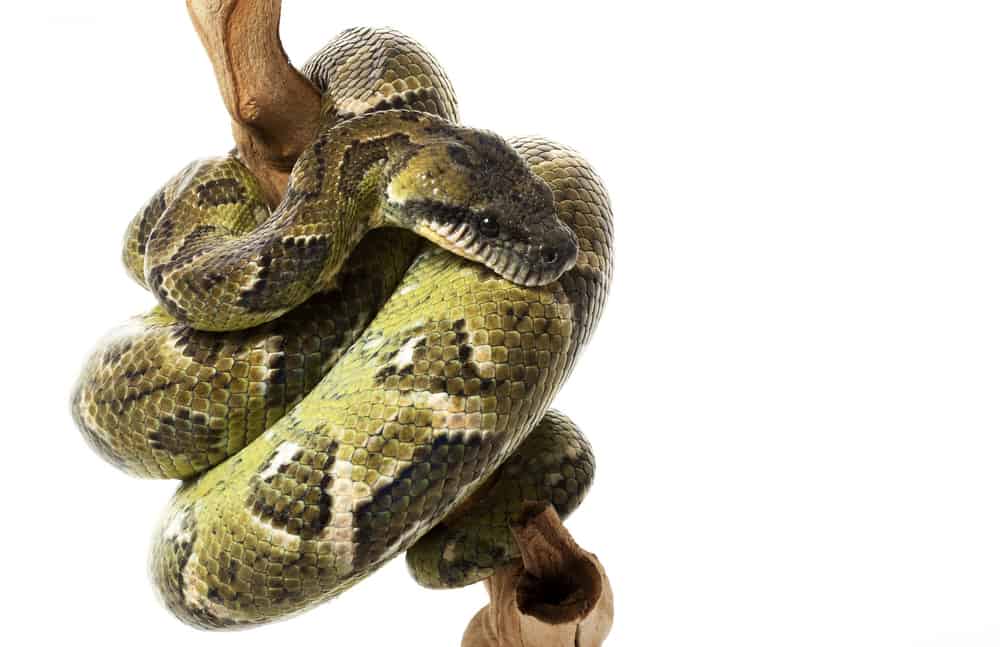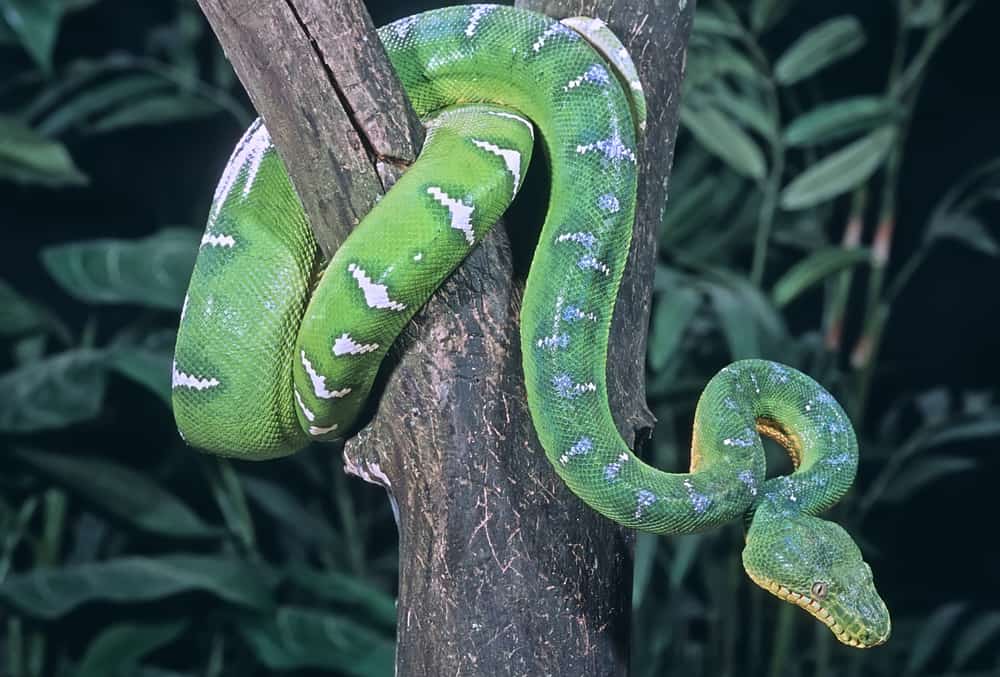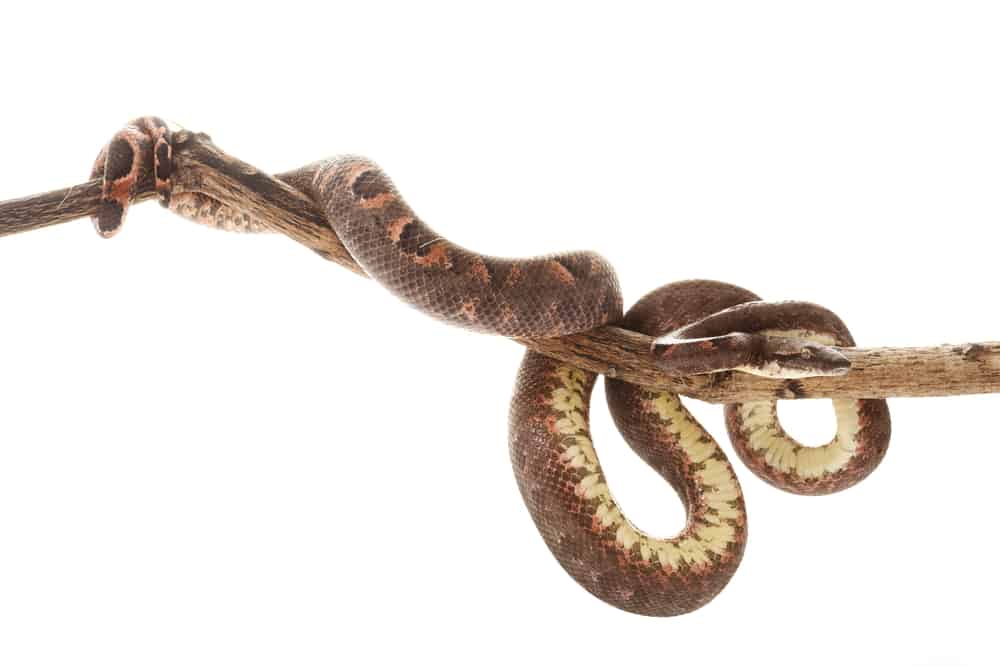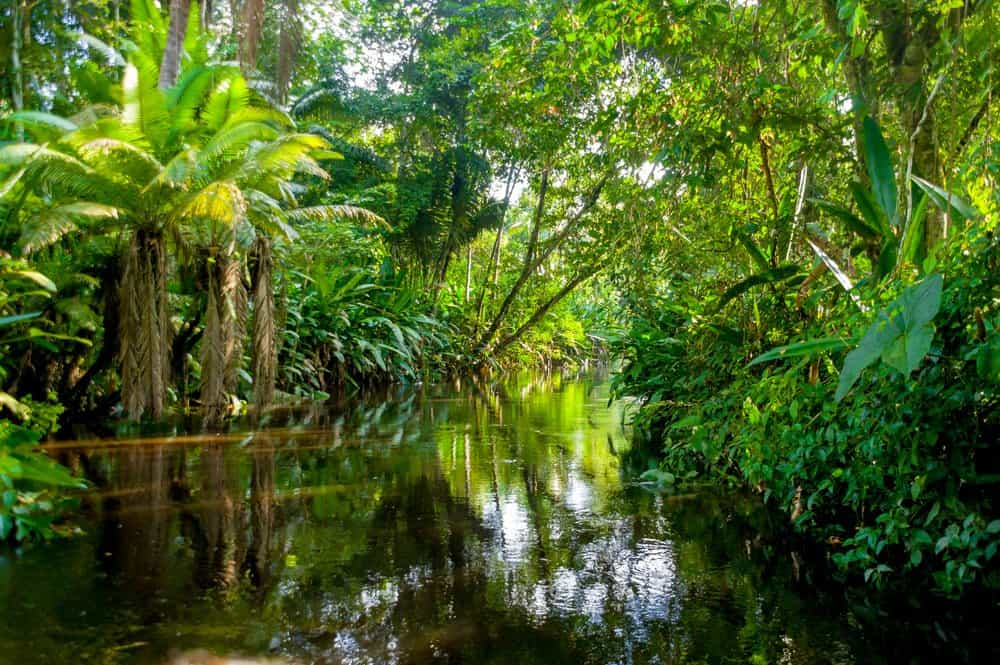The Boidae family is a big one, with about 49 species. They’re commonly known as boas or boids and include the monstrous green anaconda and diminutive rosy boa. Most boa species inhabit areas of the “New World,” meaning the Americas and surrounding island complexes. However, the Madagascar tree boa and a few others live outside those areas.
Sometimes, common names get confusing, and one term often refers to multiple species. Such is the case with “tree boa.” While only about 8-10 have the term in their common names, you could say that most boas are tree boas to a greater or lesser degree. Even the giant anaconda spends part of its life in trees.
Check out these awesome tree boas you’ve probably never seen! These five fantastic species come from different parts of the world; they’re uniquely beautiful nonvenomous rodent eaters.
5. Madagascar Tree Boa

The Madagascar tree boa actually spends a large portion of its time on the ground, but it’s more arboreal than other Madagascan boas.
©fivespots/Shutterstock.com
This cutie hails from Madagascar, the island that gave us lemurs, fossas, and comet moths. Even though it’s called a “tree boa,” the Madagascar tree boa (Sanzinia madagascariensis) spends much of its time on the ground – it’s just more arboreal than other Madagascan boas. When it’s born, it has a bright red base color that becomes green as it matures and darker markings. At full size, these snakes reach about 6 feet long, making them a mid-sized boa.
This species has several heat-sensing receptors in pits along its upper lip. Captive-bred Madagascar tree boas are relatively docile, but juveniles can be aggressive until they figure out that you’re not a threat to their safety. Like most boas, they give birth rather than laying eggs, and can have up to 15 at one time.
In Madagascar, scientists estimate that they have lost at least 20% of their population. They’re vulnerable to extinction because of habitat loss, mining operations, and illegal collection for the pet trade.
4. Emerald Tree Boa

Juveniles of the emerald tree boa are shades of red, orange and yellow before they mature to be a striking green.
©outdoorsman/Shutterstock.com
This snake hails from the rainforests of South America. An adult of the species measures between 4 and 9 feet long. The scientific name of the emerald tree boa (Corallus caninus) comes from the long canine-esque teeth.
Juveniles are various shades of red, orange, or yellow. After about a year, they mature into a gorgeous green with thin, white crossbars – giving rise to their “emerald tree boa” moniker. The species has golden eyes, and like most boas gives birth to several neonates at a time. It waits in the trees, coiled up with its head pointed sitting atop the coils, always watching for a meal. It often snatches a meal off the ground, while hanging from a branch.
There are two species of tree boa but, for many years, they were considered two subspecies of the same (Corallus caninus) species. Scientists described them as a southern and a northern one. Prevailing opinion as of today is that they’re two separate species.
The emerald tree boa is usually found in Brazil, and is illegal to export; it is protected by both CITES and the Brazilian government. Unfortunately, some still make it out of Brazil illegally in the pet trade. IF you plan to own one, make sure you know that it was captive-bred. This snake has a tendency towards being more aggressive than its southern cousin.
On the other hand, the Amazon Basin emerald tree boa (Corallus batesii), is much easier to handle and is readily available as a captive-bred pet. They have a calmer disposition than their northen cousins and are much easier to keep. That said, the species isn’t for beginners and can’t tolerate frequent handling the way a ball python can.
It’s important to note that one or both species may be illegal to own in some areas. Both species suffer from the collection for the pet trade. This is their biggest threat. It’s becoming popular among snake lovers, and it’s no surprise. This snake is beautiful. However, it can also be very sensitive as a pet, and only experienced reptile keepers should keep it.
3. Pacific Tree Boa

The Pacific tree boa is widespread throughout its range in Melanesia and Polynesia.
©fivespots/Shutterstock.com
Pacific tree boas (Candoia bibroni bibroni) inhabit Melanesia and Polynesia and can reach 5 feet in length. Though not the largest boa, they are the biggest of the Candoia genus. They are normally a pale brown, tan, or reddish base color with stripes, blotches or spots. Then again, some individuals don’t have any pattern at all.
This reasonably active snake hunts in the trees and on the ground. One study suggests that its favorite prey seems to be skinks and rodents, although it will also eat bats, birds, geckos, and small iguanas. Even though it’s widespread throughout its range, there is a surprising lack of information available on the species.
2. Cook’s Tree Boa

Cook’s tree boa is a rare boa that lives on the St. Vincent island of the Caribbean, it’s considered ‘near threatened.”
©El Arquitecto de Huesos/Shutterstock.com
Another boa endemic to a small area, the Cook’s tree boa (Corallus cookii) can reach 5 feet as an adult. It is mainly brown or gray-colored and a slender boa species. Although it’s a fairly versatile and naturally rare boa, it only lives on one island in the Caribbean, St. Vincent. There’s also the concern that illegal collection for the pet trade, because it’s already been reported. These facts gave IUCN cause to classify it as “Near Threatened.”
At this point, there aren’t many in captivity, and we’d like to see this adorable nocturnal boa stay wild.
1. Blomberg’s Tree Boa

Blomberg’s tree boa is an entirely arboreal species that lives on the Pacific side of Ecuador.
©Fotos593/Shutterstock.com
Next up is an entirely arboreal tree boa species. The Blomberg’s tree boa (Corallus blombergi) was named after the man who collected the holotype: Rolf Blomberg. Blomberg was a Swedish explorer, non-fiction writer, photographer, and documentary film producer who lived from 1912 to 1996. He arrived in the Galapagos Islands in 1934 and continued a lifetime of adventure.
Thanks to his efforts in documenting the natural world, several animals are named for him, including Blomberg’s toad (Bufo blombergi), which measures 5.9-9.8 inches long.
Blomberg’s tree boa inhabits the Pacific side of Ecuador. It’s a nocturnal predator and inhabits the tops of the trees in the rainforests there. It takes a more active role in hunting than many boas, and spends its days hunting rats, birds, bats, and more. Researchers spotted some individuals trying to catch small bats flying between the tree branches.
Scientists don’t know much about this rather reclusive animal. However, the authors of a 2008 study found that females give birth to over a dozen babies about 5-6 months after mating.
The same study notes that the Choco region of Ecuador, where Blomberg’s tree boa lives, is highly fragmented because of human encroachment and deforestation. The entire region is at risk, making all the animals that inhabit the forest at risk as well. The IUCN classifies them as endangered with an unknown population.
These beautiful and rare snakes could become extinct if current trends continue.
The photo featured at the top of this post is © robotrecorder/Shutterstock.com
Discover the "Monster" Snake 5X Bigger than an Anaconda
Every day A-Z Animals sends out some of the most incredible facts in the world from our free newsletter. Want to discover the 10 most beautiful snakes in the world, a "snake island" where you're never more than 3 feet from danger, or a "monster" snake 5X larger than an anaconda? Then sign up right now and you'll start receiving our daily newsletter absolutely free.
Thank you for reading! Have some feedback for us? Contact the AZ Animals editorial team.






